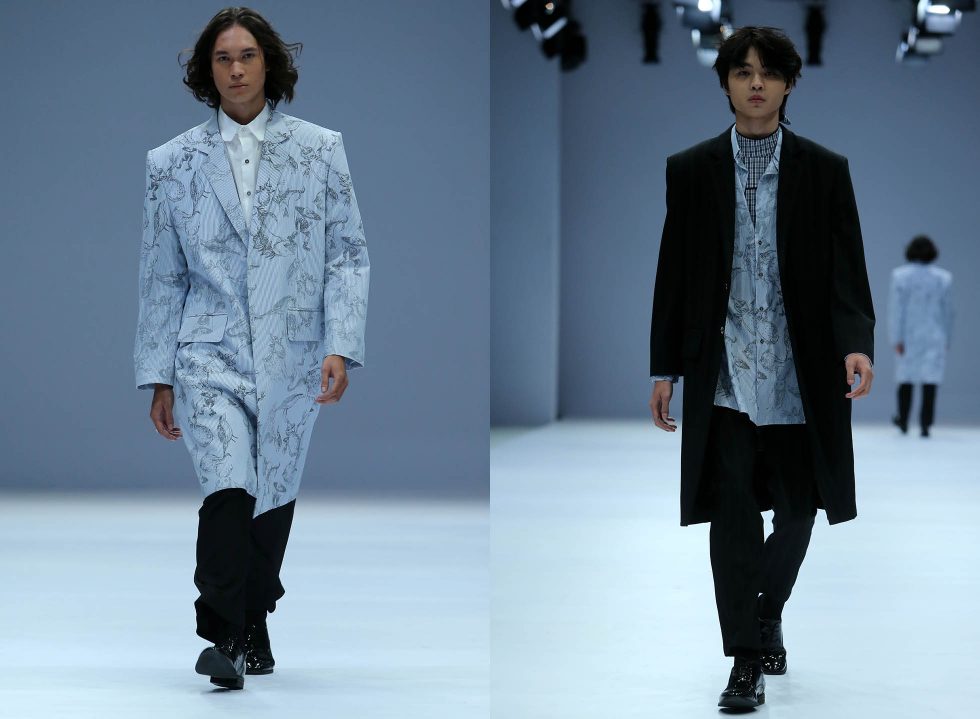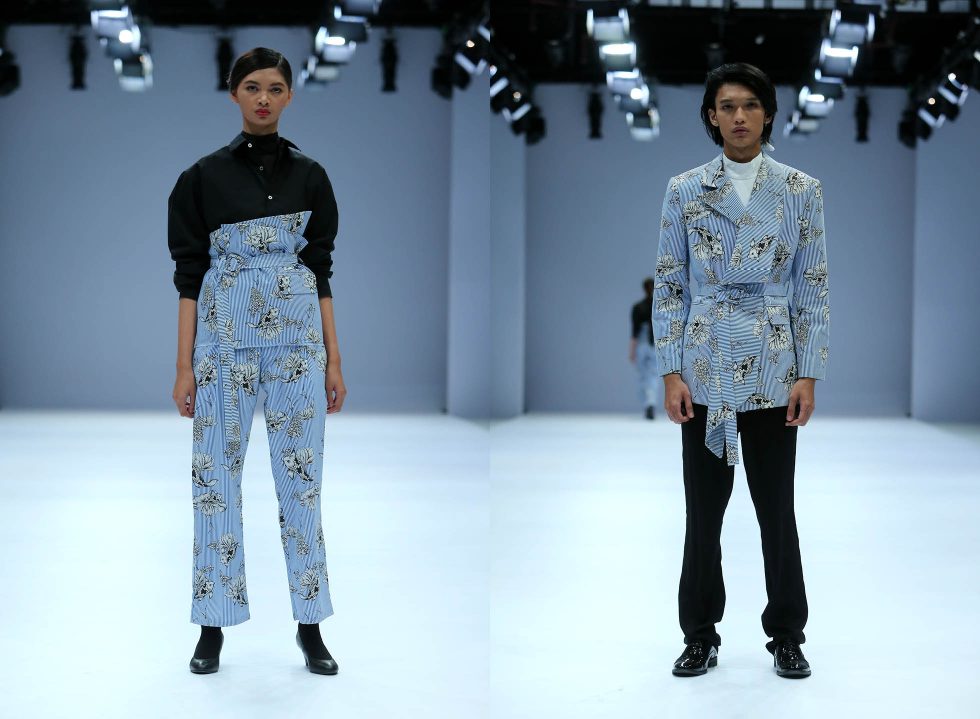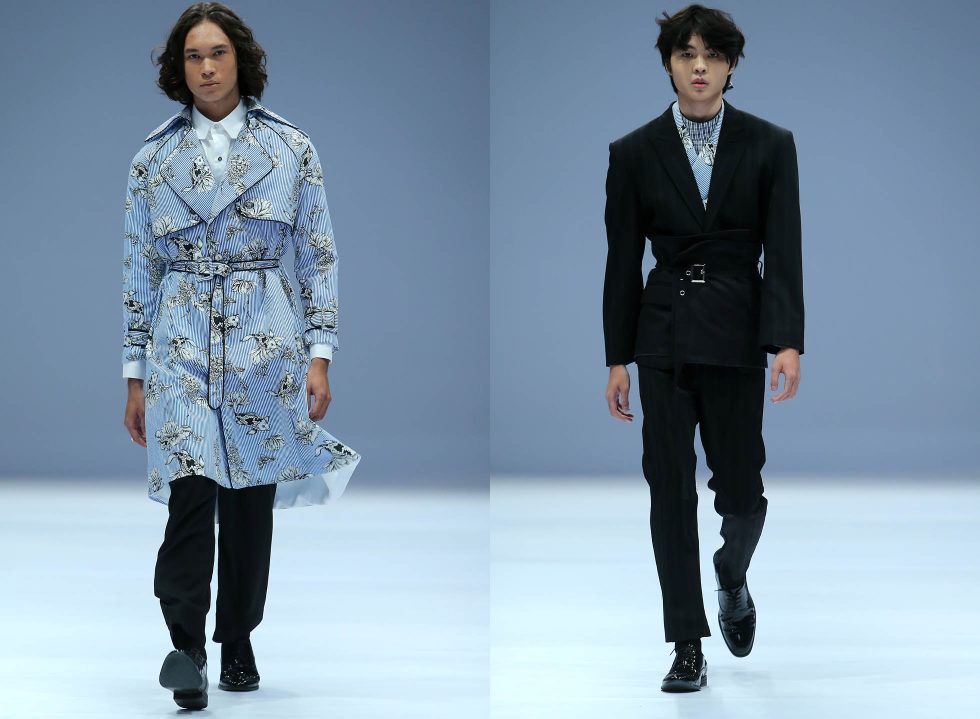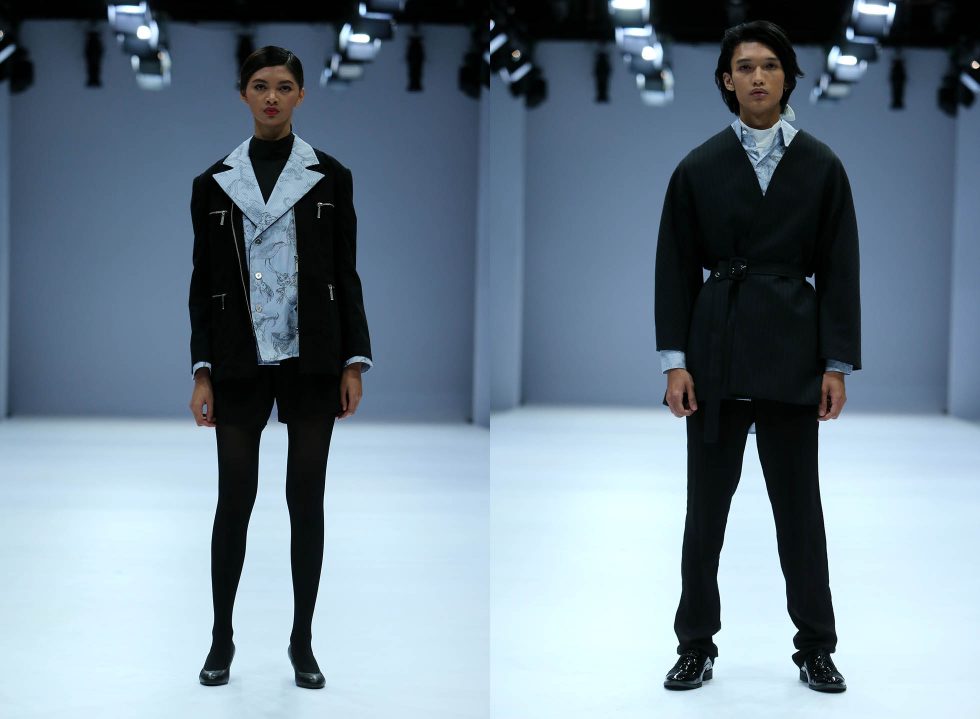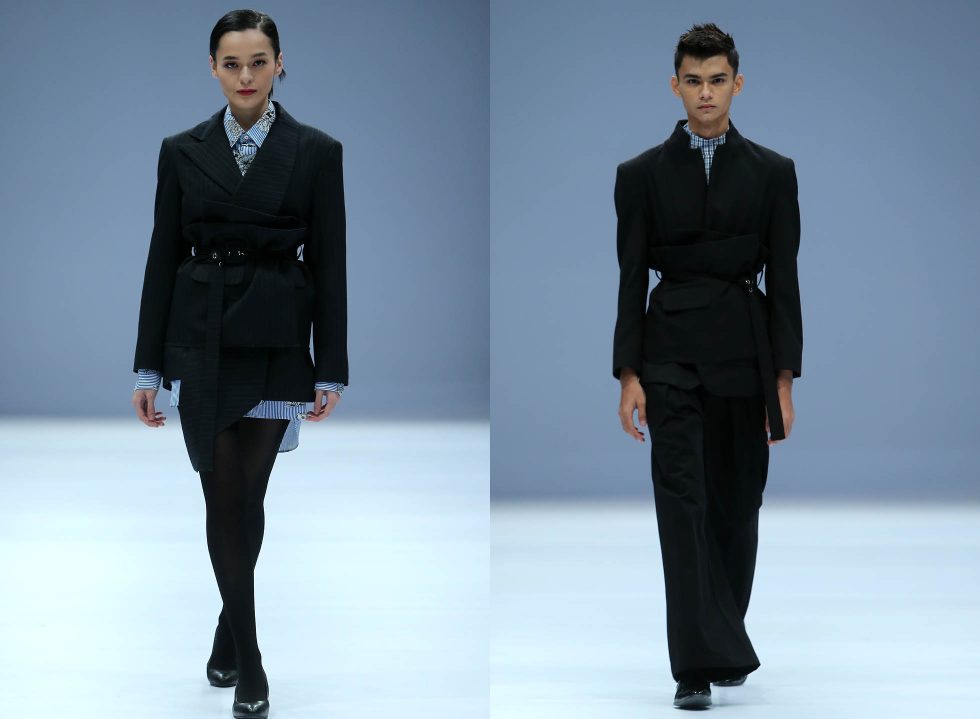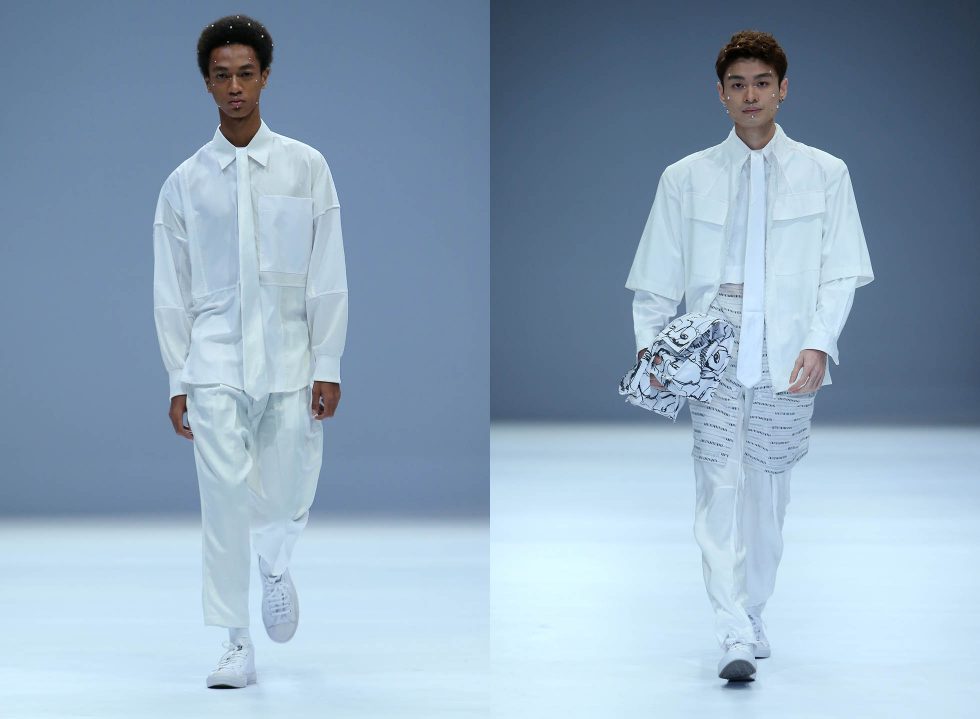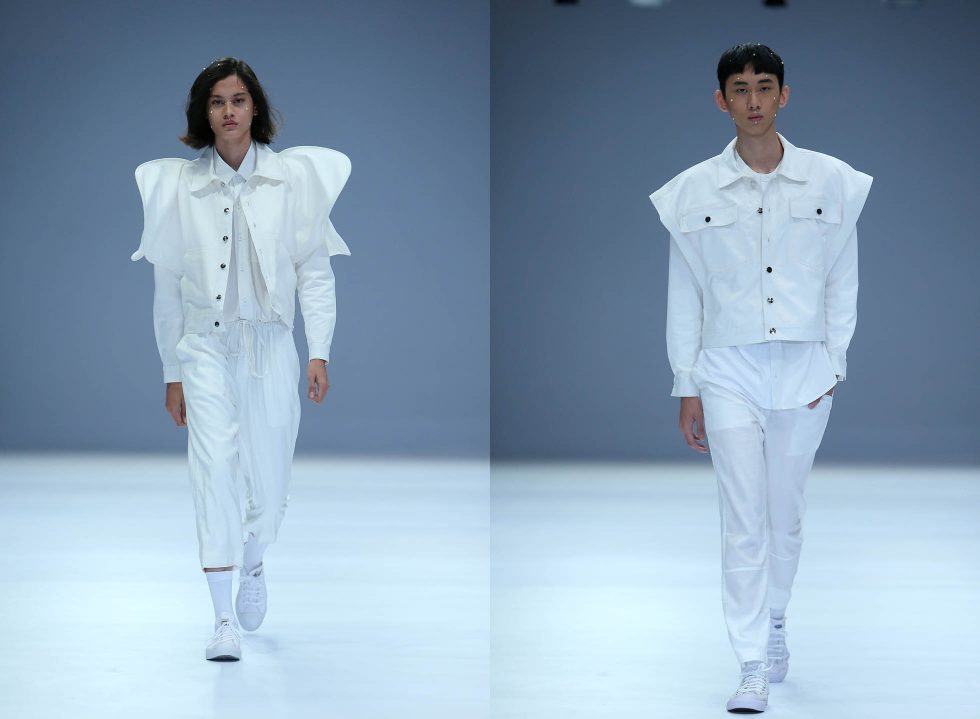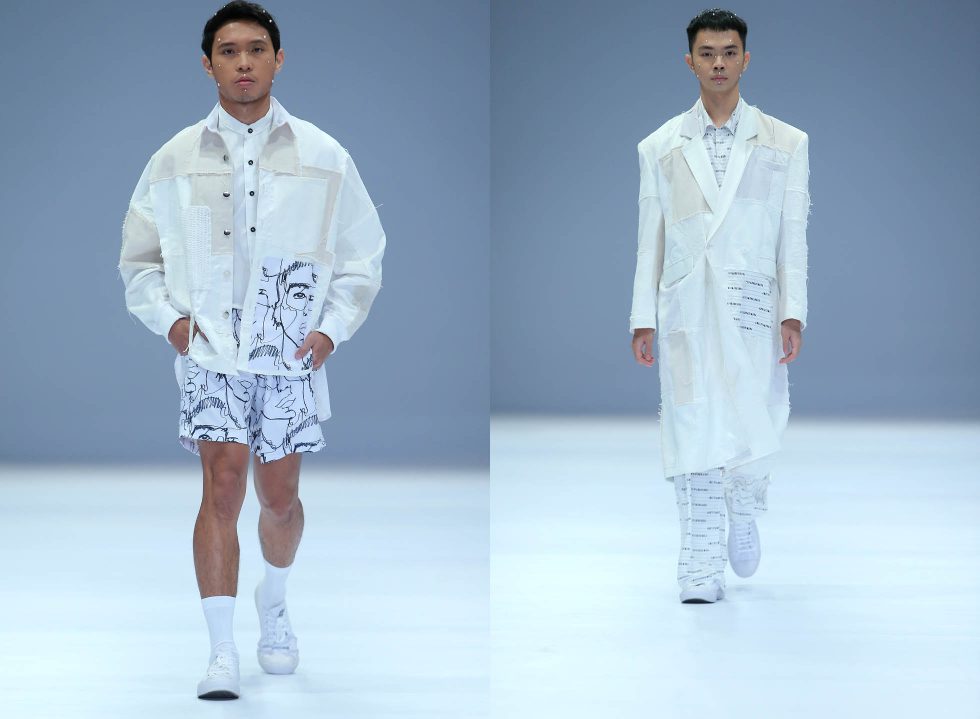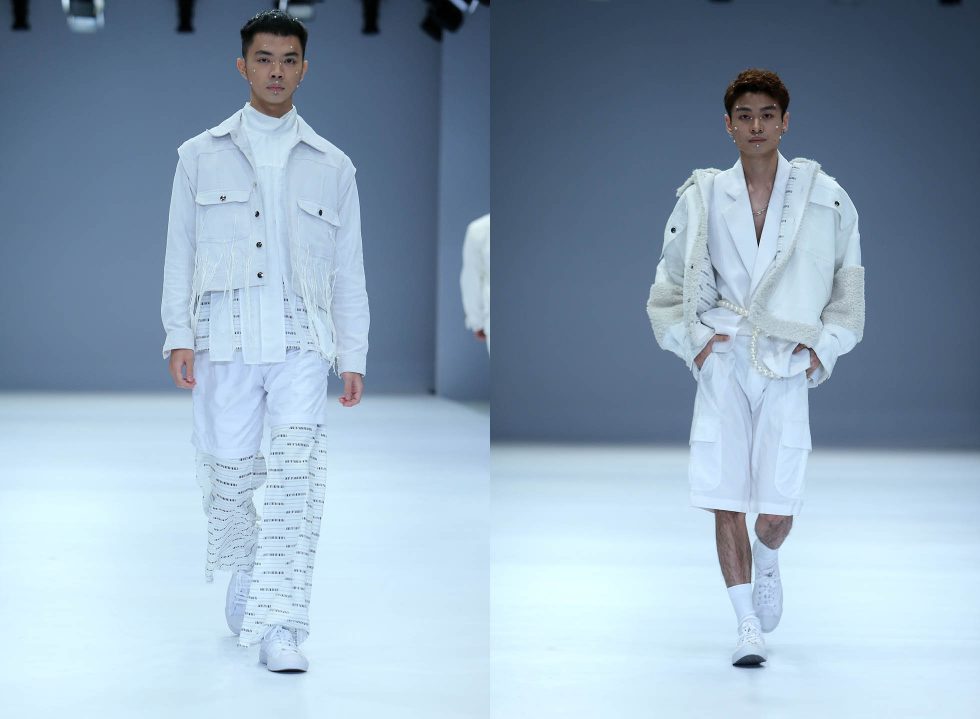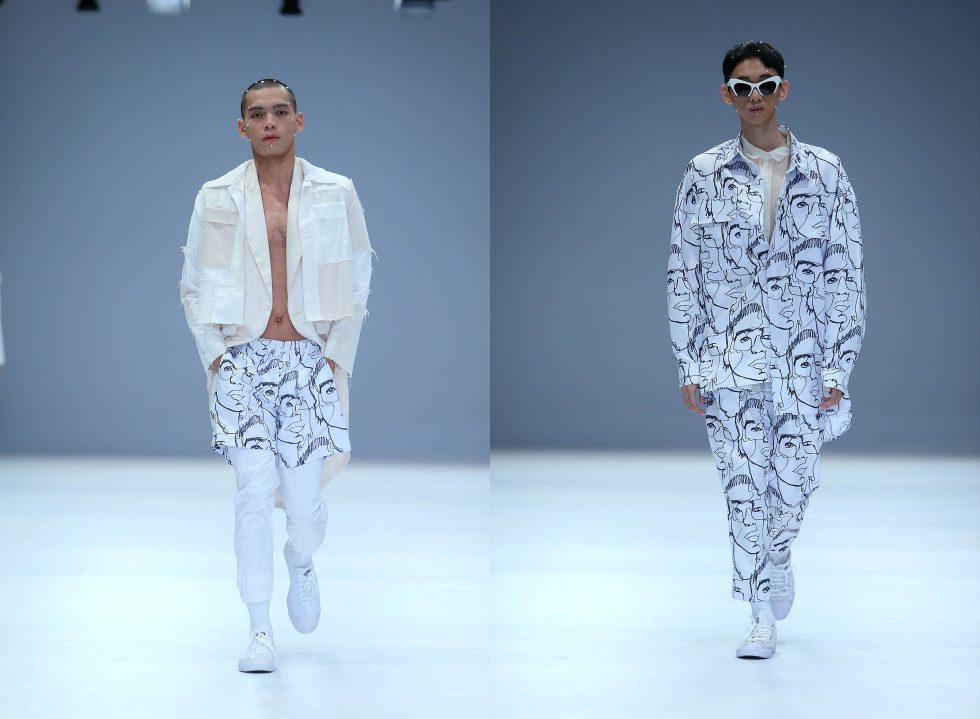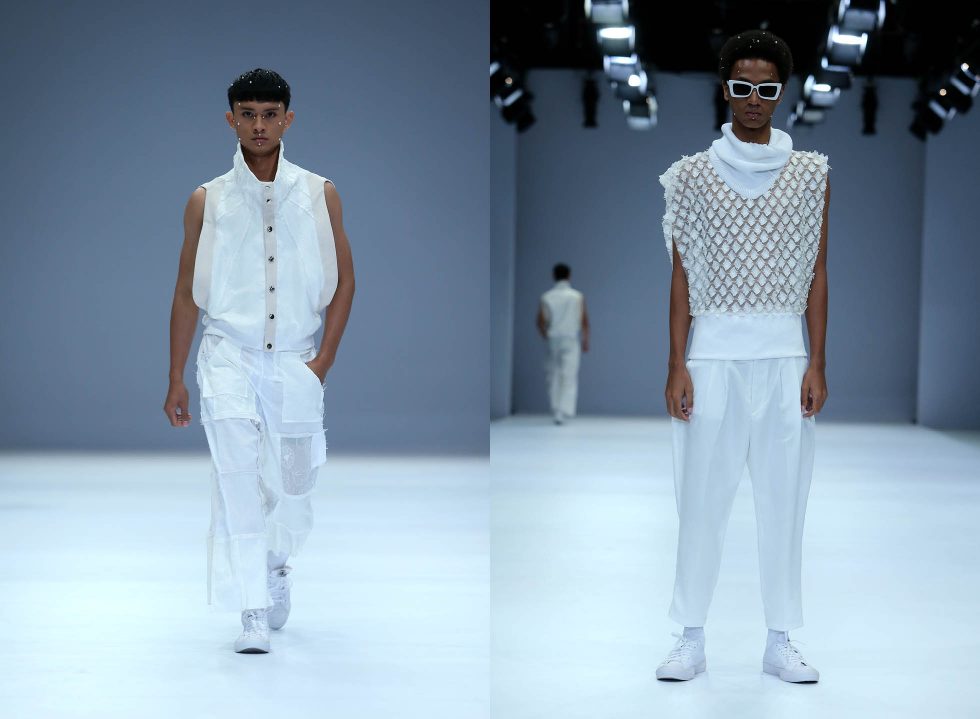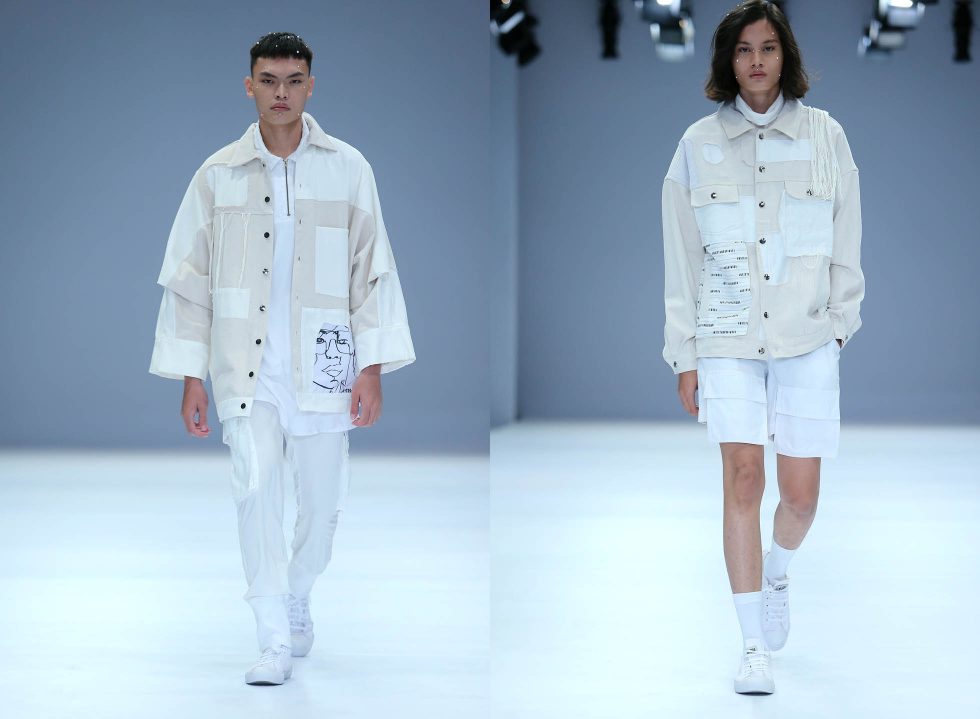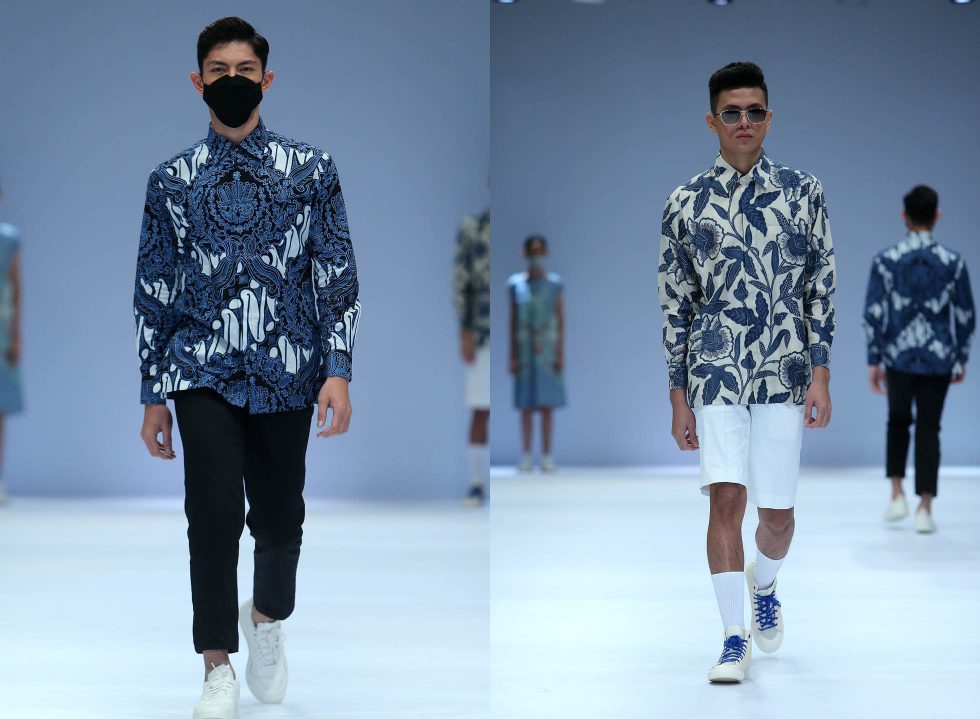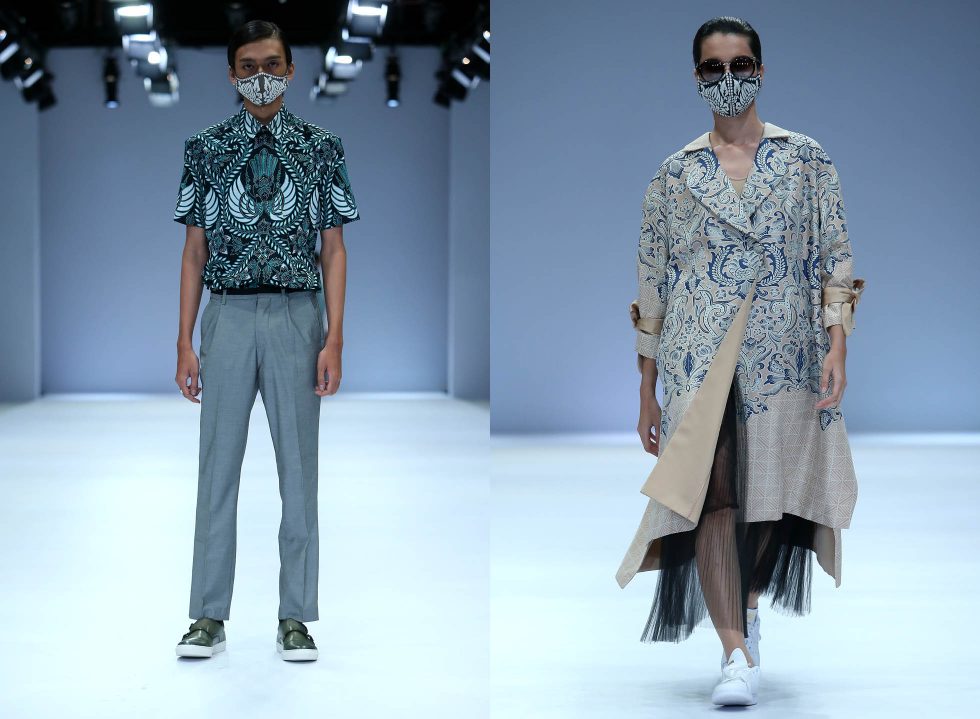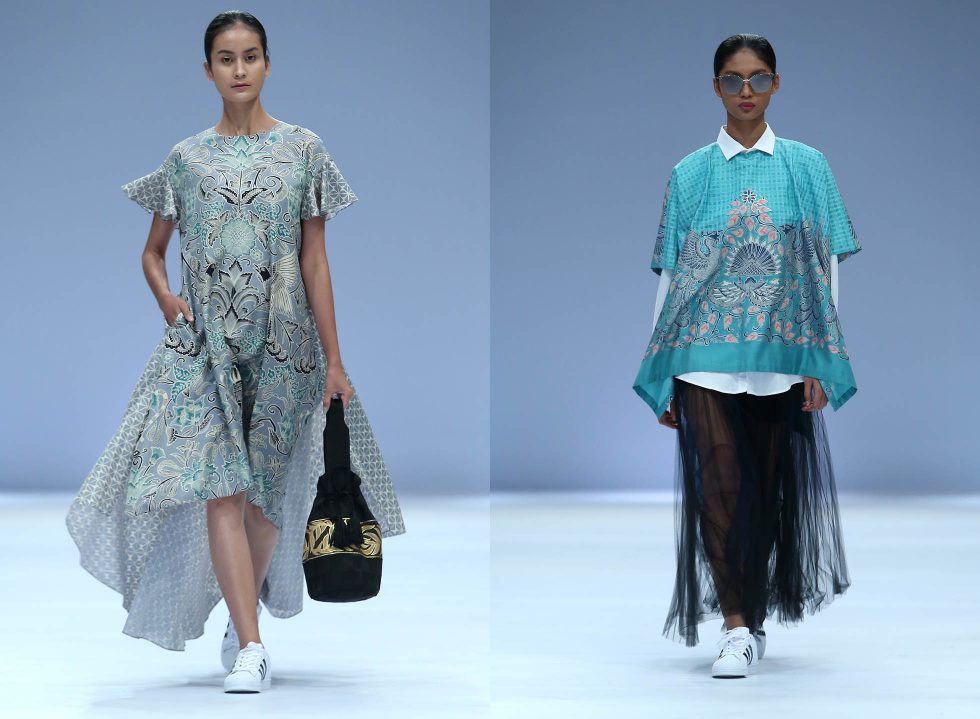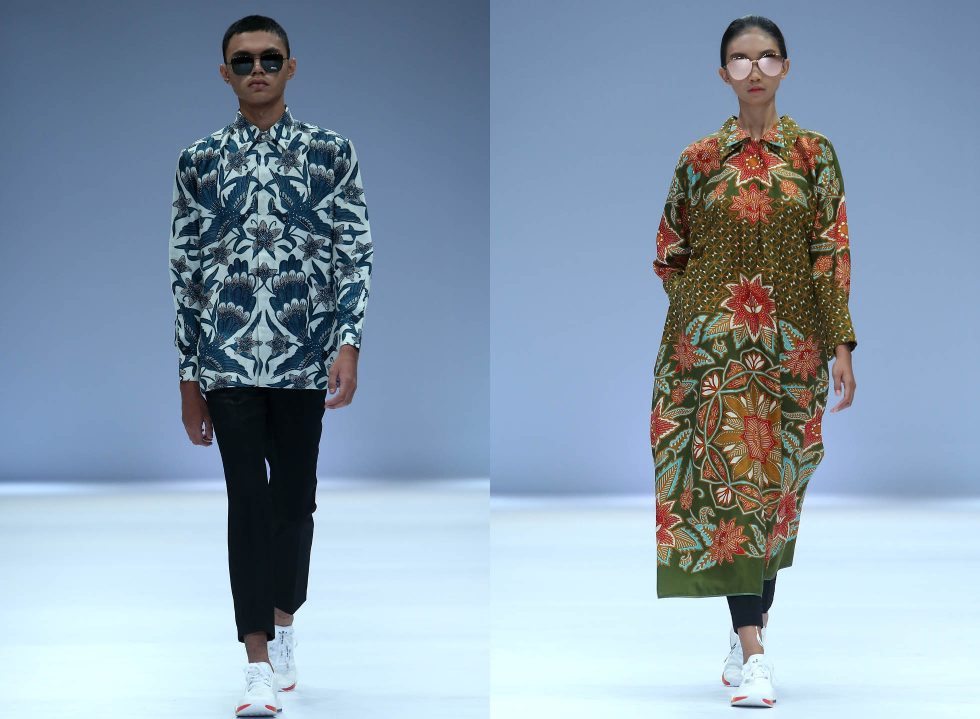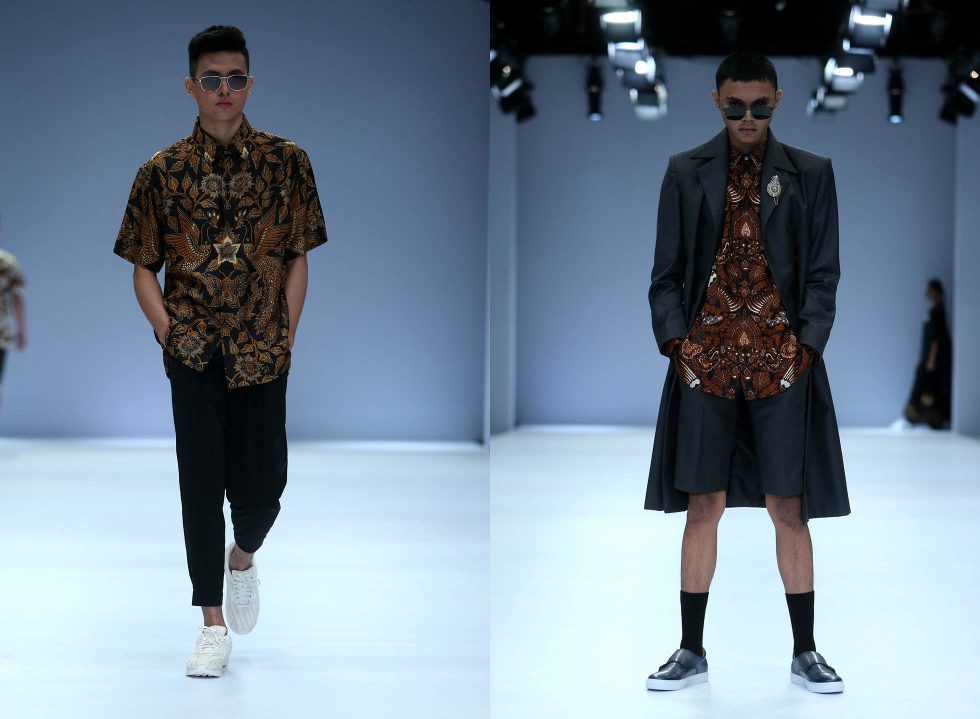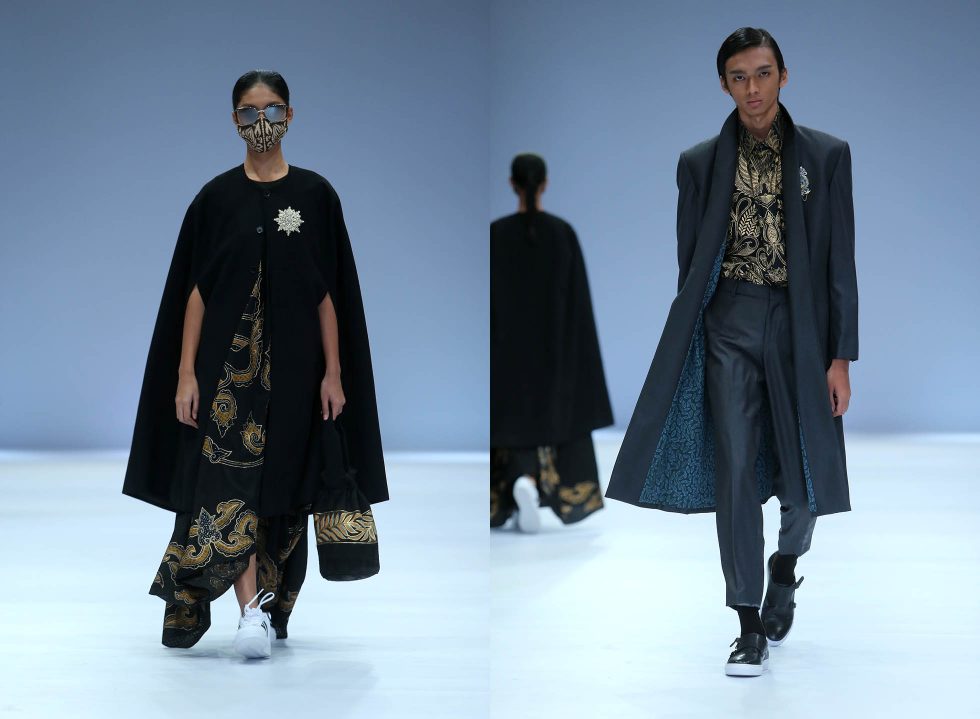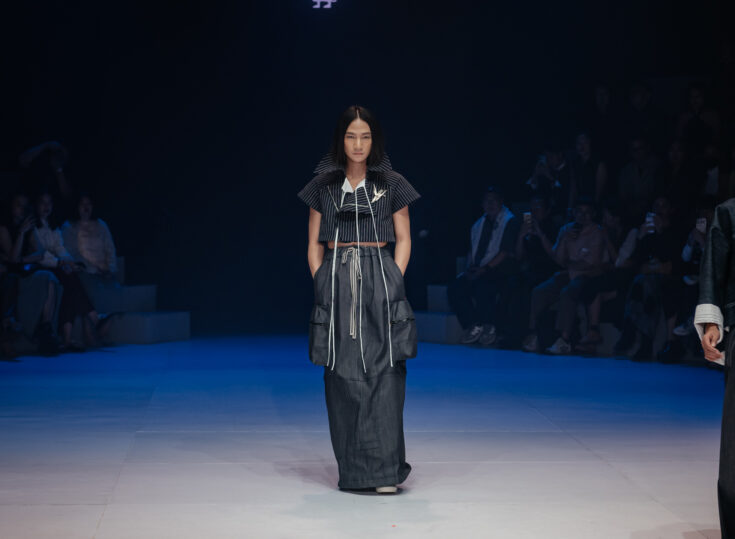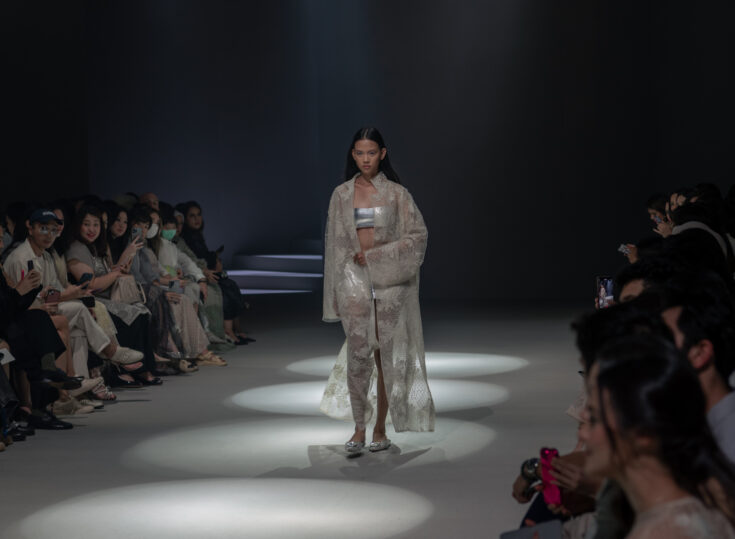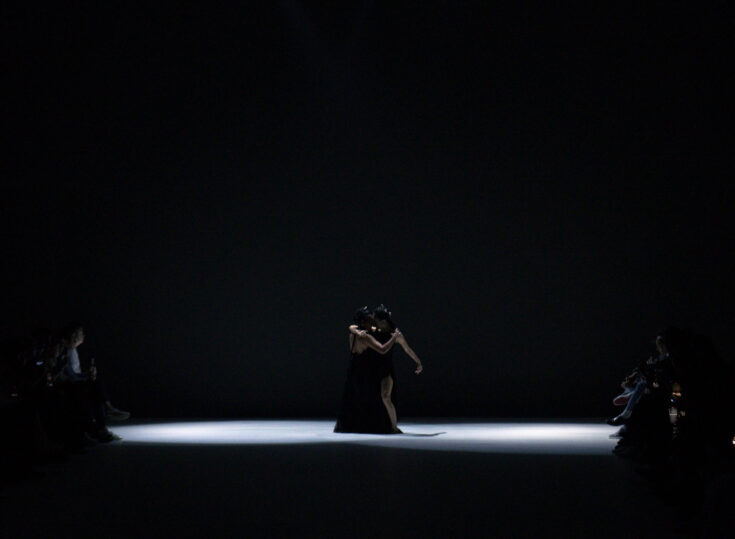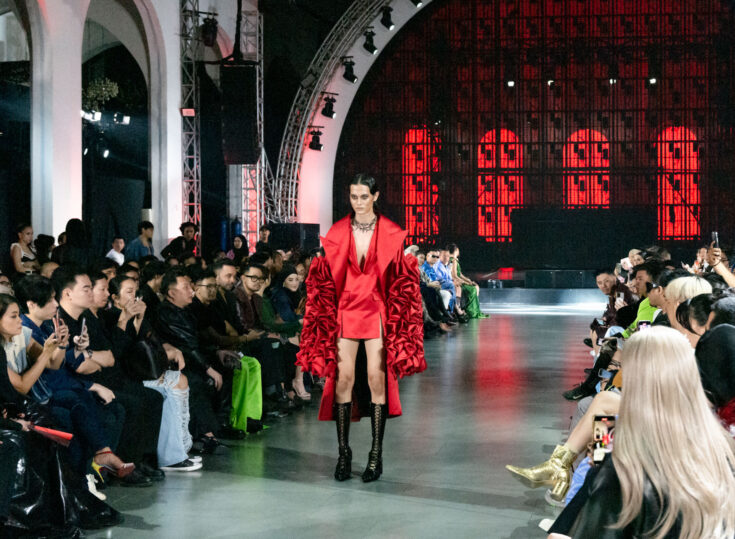How do you design a collection when the entire world feels like it’s in a limbo thanks to the pandemic? We’re not quite out of the tumult, but optimism is growing with the news that Pfizer and Moderna vaccines have proven to be effective. This is probably why “Hopefulness” seems to be the takeaway for some of the local designers.
Wilsen Willim combined the appeal of comfort wear and tailored formality in an attempt to strike a balance. In a zoom press conference, the designer mentioned he wanted something that one could wear while lounging at home but also ready to step out into the world once the pandemic is over. The element of comfort is evident in the floral and koi fish prints in calming baby blue.
Wilsen is not fixated in keeping the prints to a specific choice of garment. They were rotated evenly, in an almost formulaic way. If the coat is in blue, then it’s paired with black pants. When the tailored jacket and pants are in black, blue shirt peeked out of the collar and wrists.
As a whole, the collection was consistent but also lacked a punch. Instead of melding comfort wear and workwear as one entity, the idea was mainly conveyed through styling instead of design. It’s teetering dangerously to a snooze fest.
Designer Amot Syamsuri Muda is feeling hopeful despite the trying times. For his eponymous label’s collection, he stripped away all colours and ran with an all-white collection to reflect the optimism. Over the year, the label has established a fun disposition aimed at extroverted young male adults who are looking for a certain pizzaz in their getup without necessarily ending up as the subject of ridicule.
So it’s entertaining to see how Amot whipped up a collection in a time when nightlife activities are at an all-time low and even the most sociable men are confined indoor. The designer focused on staples that are easy to mix and match, with most of the attention on jackets. Here, Amot gave a variant to choose from: jacket with wing sleeves, a few in patchwork and one fully covered in face illustration prints paired with matching pants.
With social events like concerts and festivals shifting to various digital platforms, it’s not hard to see these men all dressed up in their bedroom, swaying to DJ set while live streaming their experience online.
In the press release, Amot mentioned he’s incorporating a touch of 20s, 60s, 70s and 80s for this collection. Such a statement is a slippery slope for many local designers and you wished he could make do without that statement. It wasn’t evident anyway. Instead, he could have paid more attention to the choice of fabric, because they are at risk of looking on a budget. And white colour accentuates that easily even when you’re viewing the runway from a screen.
For Iwan Tirta, batik is not just a cultural heritage, it is an aspiration. But what can you do with something that is so steeped in tradition and resistant to change? You style it differently. To spruce up batik, each look was paired with a pair of white sneakers, colours are poppier instead of the usual dowdy earthy tones and silhouette for men’s shirts are leaner.
What’s apparent is the contrast between the styling of the two sexes. The men’s tend to be younger with batik paired with shorts and cropped ankle pants, while the women’s follows a mature parameter. Although such a narrative is something that’s so predominant, even in international brands, it also feels stale. It continues to reinforce the idea that boys will be boys. And the girls? They are expected to be proper women.
